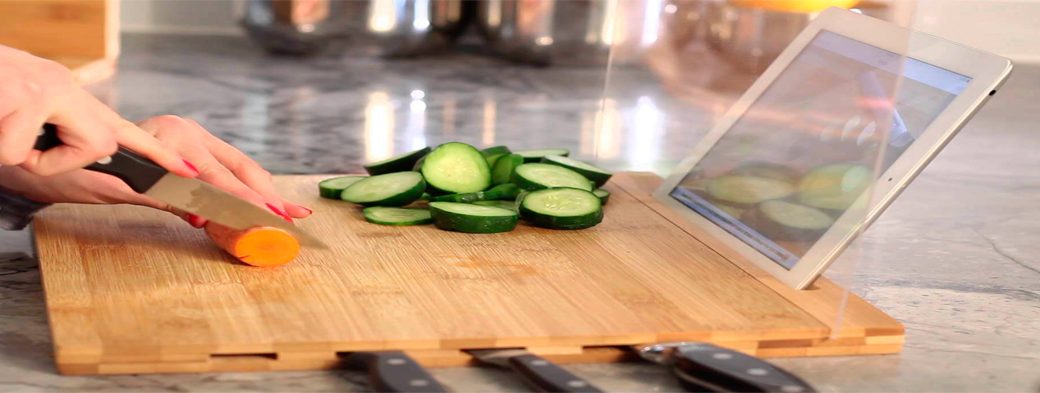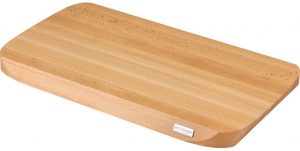A good knife needs an excellent Wood Cutting Boards. Using your knife on a bad Cutting Boards is like taking one step forward and two steps back: the blade cut the food but the cutting board dulls the blade. And there are also cases of the effort that is made, sometimes causing lower back pain. Considering that reducing boards are indispensable in the cooking area, you have to have a good one that will certainly function completely with your blades.
Despite the increase of plastic cutting boards, wood cutting boards are still wildly prominent. The importance of a good cutting board is so fundamental that we had already done the article Large Wooden Chopping Boards to explain that importance. However what type of wood is utilized for cutting boards? Are wood boards risk-free? Allow’s see.
Features of a Perfect Wood Cutting Boards
Features of a Great Cutting Board
It’s done in the wood. Wood product needs to satisfy certain standards to make an excellent cutting board. These are:
Firmness
You probably know all about hardwood and softwood trees. Softwoods expand faster as well as are primarily evergreen cone-bearing trees. Believe yearn, cypress, cedar. Their wood has a tendency to be soft.
Hardwoods expand slower and are harder (certainly), meaning their wood is denser than softwood. Assume maple, teak wood, walnut, and so on. This makes them better choices for reducing boards due to the fact that wood scratches much less easily than softwood. The wood should not be too hard though, because after that it would make the knife boring with constant use.
Porosity
This refers to the size of the pores (very little holes) in the timber. Porosity is determined by the wood grain. Woodgrain is the dimension, instructions, as well as look of the wood cell fibers of a reducing board.
The most effective wood for a cutting board is closed-grained wood. It has little pores as well as feels smooth. Tiny pores prevent fluids from entering the timber, maintaining the reducing board safe from microorganisms and various other germs.
Open up grain timber has huge pores as well as feels rougher. Bigger pores enable liquids and also various other bits of food right into the wood, which can in turn urge the growth of germs as well as various other bacteria. Open grain timber also warps even more easily as it takes in and also holds more water.
Toxicity
Wood Cutting Boards can be found in direct contact with food, so they can not be made from toxic timber. Some tree species are understood to generate toxins for reasons best understood to them. Avoid these for use as reducing boards as any type of all-natural contaminants in the wood could be soaked up right into the food. For example, some varieties of tropical wood trees create great deals of toxins to keep predative microorganisms and insects from consuming them up. Prevent them.
If you’re uncertain what material is safe, maintain to timber from trees that create edible nuts, fruits, or sap. Likewise, see to it any type of surfaces on the cutting board like adhesive are safe.
Types of Wood Cutting Boards
Now that we know what alters sorts of wood helpful for reducing boards, let’s look at some preferred products for the excellent wood cutting boards.
Maple
Maple, especially sugar maple, is the best material for wood cutting boards. It is strong sufficient to stand up to daily use, yet not as well tough to ruin your knife.
Likewise has little pores as well as carefully packed grain, so it won’t absorb liquids easily. That implies it’s also simple to clean and it dries quick.
Maple reducing boards are naturally antimicrobial, which indicates they are difficult on germs and also won’t let them expand. They are also reasonably budget-friendly. Maple’s only disadvantage is its light color, which quickly retains stains from vibrantly tinted foods.
Walnut
Walnut is the reverse of maple. It is a hefty and also soft closed-grain hardwood. Walnuts come in rich, dark colors, which just about hide any kind of stain, so you do not have to bother with unpleasant marks.
Soft qualities makes walnut one of the most knife-friendly of the hardwood reducing boards because soft cutting boards don’t boring blades as much as hard cutting boards. Nonetheless, soft boards obtain scratched and nicked a lot more, so that’s a downside. Anyhow, you can’t have everything. Remember also that this tree creates nuts, as well as oils from the wood can enter the food. Look out for nut allergic reactions.
Beech
Beech is a European tree that produces wood that is as difficult as maple. Like maple, it is likewise water, dust, and also germ-resistant as a result of its little pores.
Beech is like wine-it improves as it ages. When young, it has a velvety, soft pink tone, which after that darkens to a charming red shade with time.
Teak
Teak wood is an exotic wood tree that normally expands in Southeast Asia. It has high degrees of silica, which makes it truly difficult and scratch-resistant. This is great, as fewer scrapes imply much less dirt and bacteria getting in. However, it likewise means that it will certainly plain your blades much faster.
Teak also has lots of natural oils and is closed grain, that makes it water-resistant. This avoids the cutting board from warping (losing shape) because of continuous washing.
Teak cutting boards last really long due to their firmness and resilience. They, as a result, aren’t affordable. Still, if you enjoy cooking for the long-haul, they are a rewarding investment.
Paulownia
Some reducing boards like the Kiso Hinoki Japanese Cutting Board are made from Paulownia timber. Paulownia is a tree native to Japan and various other Eastern Asian countries. It is generally called Kiri.
It is light in weight, close-grained, as well as warp-resistant. It also has all-natural antibacterial qualities, so any type of bacteria left over from washing are eliminated.
Are Wood Cutting Boards Safe?
A typical misconception regarding wood cutting boards is that they’re harmful due to the fact that they preserve germs in the timber grain. Nothing could be further from the reality.
Certain, perhaps some germs get away the laundry with soap and also water and also get involved in the timber. However, the germs remain trapped inside as well as can not increase so they eventually pass away. Plus, plenty of wood cutting boards are made from timber with natural antimicrobial residential properties which stop the growth of bacteria. As long as you keep your board clean as well as completely dry when not being used, it should serve you for a long, long time.
Conclusion of Perfect Wood Cutting Boards
Wood Cutting Boards look excellent and genuine in the kitchen. When coupled with an best chef knife they produce satisfying cooking. Shop our series of Wood Cutting Boards Here.





